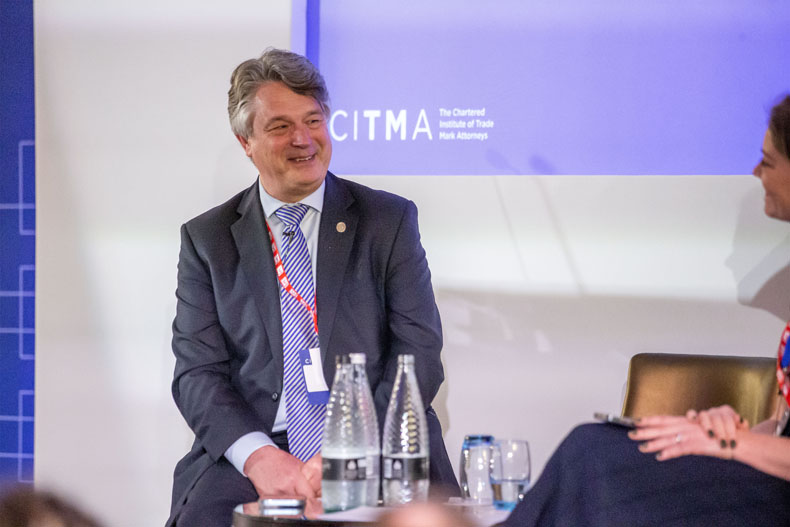Life as an Appointed Person: Getting there and tips for success
At our Spring Conference, Philip Harris shared his varied career with us alongside his key tips for bringing your case to an Appointed Person.

As the Appointed Person for trade marks - one of only nine Appointed Persons in the UK – and an experienced Chartered Trade Mark Attorney, solicitor and barrister, Philip has a uniquely “both sides” view of the trade mark profession.
When not at work, Philip can be found playing bass guitar in his band or riding his motorbike – a pursuit which he took a year out to spend time doing recently.
In a fireside chat chaired by our current President, Rachel Wilkinson-Duffy, Philip reflected on his professional life and particular areas of interest.
Philip’s career
Following his first role following graduation as a trainee trade mark attorney, Philip moved to the Wellcome Foundation. Here, he became involved in overseas litigation and started to move his focus towards undertaking contentious work more generally.
In Philip’s words: “there’s something about contentious work that’s a little like a chess game”.
Alongside qualifying as a solicitor, Philip took up the reins as CITMA (then ITMA) President from 2006 to 2008.
While in role as ITMA President, he focused on pursuing advocacy rights. His term as President coincided with efforts from the Labour government to limit the role of the “old boys’ network” in judiciary appointments.
As a part of this, ITMA responded to government consultations on widening the eligibility criteria for appointment.
Philip identified that trade mark attorneys hold litigation rights, and requested on that basis that a role of an Appointed Person for Trade Marks be created. With the support of CIPA, this role was created in 2008.
After two previous applications, Philip applied again for the role when new vacancies were advertised in October 2019 and stepped into the position in September 2020.
Prior to becoming an Appointed Person, Philip also trained to become a barrister. Training as a barrister made him comfortable with contentious work, and with working towards a clear end goal.
He noted that working in this area hones the thought process of “what do I need to prove and how am I going to prove it?”.
Handling failure
Philip pointed out that, for anyone handling contentious work, it is inevitable that at some point they will face a professional failure. He offered the approach that failures can be broadly split into two categories: anticipated and unanticipated.
Anticipated failures come when the risk of failure has been managed as far as possible, but was unsuccessful on this occasion. It’s impossible that your case will always be the most convincing.
On the other hand, unanticipated failures emerge when practitioners are tripped up by hurdles that they didn’t see coming, perhaps thanks to insufficient preparation in that area.
These are opportunities for reflection and development – a notion which is now a common part of training for trade mark professionals.
Bringing cases to Appointed Persons
Philip identified some common tips that support successful appeals:
- Don’t waste time arguing degrees of similarity. Proving that a hearing officer should have identified a medium degree of similarity rather than a high one is very unlikely to yield useful results
- Keep your focus narrow. It’s improbable that you will have more than three grounds for appeal, so focus on the ones that are likely to lead to a successful outcome
- Aim to avoid appeals. It’s preferable to present your quality evidence clearly the first time around, rather than presenting better or more detailed evidence once the appeal is necessary.

